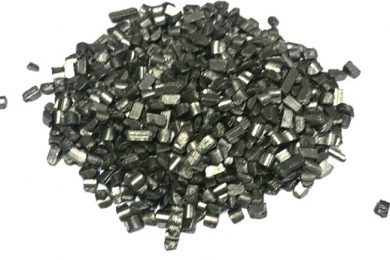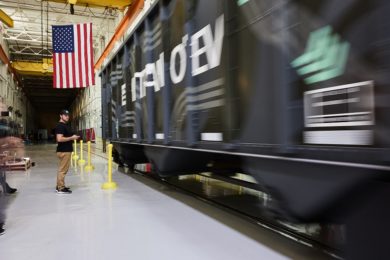Graphite demand has long been shaped by trends in steel, but this is set to change as lithium-ion battery applications surge ahead to become the No. 1 graphite market by 2026. Roskill’s new report Natural and Synthetic Graphite: Global Industry, Markets and Outlook to 2026, was published in May 2017 and includes comprehensive data on producers and consumers of graphite as well as in-depth analysis and forecast prices for the next ten years.
Traditional steel-based markets include electrodes for electric arc furnace (EAF) steel making (currently the major market for synthetic graphite), refractory furnace linings (the major market for natural graphite), foundry sands for ferrous casting and steelmaking recarburisers. Rising production of crude steel in an industrialising China previously supported graphite growth but as China reaches peak steel output, global steel production has slowed and growth is expected to average just 1-2%/y to 2026.
Elsewhere, graphite suppliers are buoyant with optimistic forecasts for growth in emerging electric vehicles (EV) and energy storage system (ESS) markets. The large size, high performance lithium-ion batteries used in these applications actually require far more graphite than lithium. As EV and lithium-ion ESS penetration rates rise in China and the rest of the world, Roskill forecasts total global graphite demand in battery applications to rise by 16-26%/y to 2026.
Cities worldwide are coming under increasing pressure to cut pollution levels and EVs could provide an answer. Their uptake is being encouraged with impressive automotive electrification targets and new incentives worldwide. Tesla is ramping up lithium-ion battery production at its US ‘Gigafactory’ and is expected to announce a second factory to supply Europe later in 2017. Three other large plants could open in Europe by 2018, operated by BMC, LG Chem and Samsung SDI.
Natural and synthetic graphite compete for use as a lithium-ion battery anode material, with China dominating the supply chain for both. Since the late 2000s, China has produced an increasing amount of spherical graphite via the high level processing of natural flake graphite, which now competes with synthetic graphite for use in lithium-ion batteries. Despite the high cost of spherical production, it is typically more price competitive than primary synthetic graphite. Synthetic graphite is still more widely used in China thanks to the prevalence of lower cost secondary synthetic graphite, sourced as waste material from graphite electrode manufacture. Synthetic graphite prices have also fallen in recent years as a result of the weakening electrode market.
Production of spherical graphite is currently confined to China because of cost and environmental concerns. Even here, flake graphite processing plant inspections are carried out frequently to improve environmental operating standards. Chinese production of flake graphite fell by around 30% in 2016 with the latest round of temporary closures.
China will continue to control lithium-ion battery supply chains over the next decade. China is the largest producer of synthetic graphite, flake graphite, spherical graphite, lithium-ion battery anode materials, anodes and the batteries themselves. Consolidation of the Chinese flake graphite market continues, with the largest anode materials manufacturer, Shenzhen BTR New Energy Material, now backwardly integrated into flake graphite production. A number of potential flake graphite producers outside of China are developing less environmentally damaging methods of spherical graphite production in an attempt to establish a supply chain outside of China but have yet to prove these methods commercially.
In January 2017, China withdrew its 20% export tax on exports of natural graphite but this move had negligible impact on the already low price of graphite through the first half of 2017. Graphite prices are expected to rise in the coming years with increasing battery demand.
China’s current high levels of overcapacity and stocks are expected to meet even the most robust demand forecasts for graphite in the short term as production levels increase from existing Chinese producers. Whether supply can meet demand in the long term, to 2026, depends on the ability for new producers worldwide to bring their graphite projects on-stream. In mid-2017, around 30 projects outside China had advanced to scoping study or beyond with a total planned capacity of 1.35 Mt/y, over 1 Mt/y of which could come from Africa.
Syrah Resources plans to begin production of flake graphite in Mozambique in 2017, followed by a ramp up to full capacity of 380,000 t/y. The picture shows trial recarburiser briquettes from its Balama project.
Major changes are happening to the structure of the synthetic graphite industry as poor performance in electrodes has led to capacity closures in Europe, Japan and North America, while new plants are opening in the emerging Asian market. An increasing amount of remaining capacity is being given over to lithium-ion battery powder production. In October 2016, the Japanese lithium-ion battery anode material manufacturer Showa Denko agreed to purchase SGL Carbon’s synthetic graphite electrode business. Then, in February 2017, Imerys Graphite & Carbon acquired Nippon Power Graphite of Japan, which has a patented CVD coating technology for the production of lithium-ion battery anode materials.










